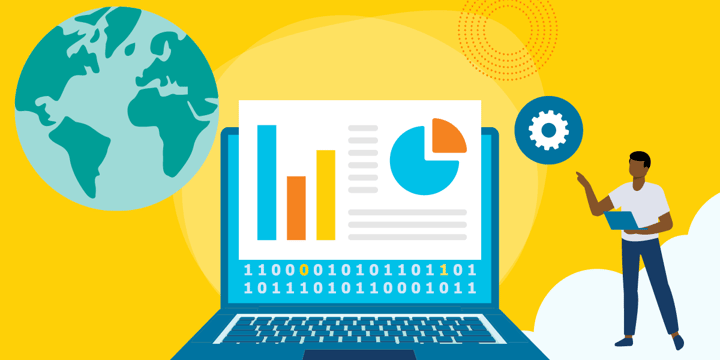In recent years, data has become an important asset, and it shapes the way organizations of all sizes make decisions. But there's a wide gap between possessing data and using it to its its full potential. This is particularly true for today’s nonprofits, which deal with siloed departments, evolving donor behaviors, and a competitive landscape.

The Data Dilemma: Necessity Meets Complexity
In 2021, Harvard Business Review reported that 99 percent of businesses want to be data-driven but that only 26 percent of companies achieved success in this area. This underscores the urgency and complexity of the data dilemma. As nonprofits navigate the intricacies of donor relationships and community engagement in strategic ways, the need for informed decision-making has become more important than ever before.
What Data Management Challenges Do Nonprofits Face?
Data silos are a barrier to insight: Organizations gather vast amounts of information but struggle to extract and migrate this valuable data to the cloud. As data is scattered across multiple locations, nonprofits risk either overlooking its potential or relying on spreadsheets for data management.
Data lakes can help to break down these silos, with services such as Amazon Simple Storage Service (S3) as the foundation of your data lake. From data ingestion to storage to analytics and business intelligence, AWS tools can help users make powerful connections, making silos a thing of the past.
The complication of keeping data in sync: While data movement and data synchronization solutions exist, cost can be a barrier for smaller nonprofits. Outsourcing your data management needs can often come with high licensing and maintenance fees, pricing out smaller organizations.
The Cloud Revolution: A Transformative Solution
Organizations can make use of modern technology to overcome these challenges and create a more secure, interconnected fundraising system. AWS provides solutions that allow organizations to prepare, process, and present data for better decision-making. We can break this into five data life cycle stages.
Data ingestion and staging: Products such as Amazon AppFlow provide users with an integration service that allows for bidirectional data flows between software as a service (SaaS) applications and AWS services. This no- or low-code solution allows you to build a data pipeline in a few clicks. This provides a secure and scalable solution at a fraction of the time and cost compared to other providers.
Data cleansing: Data integrity can mean the difference between data points that are actionable and those that not. Data cleansing is an important element in this process. When you "cleanse" data, you remove any data points that impact the quality of the data. It may entail removing or updating incorrect or outdated information, removing duplicate records, and so on.
With solutions such as AWS Glue DataBrew, you can get a sense of data quality patterns while detecting anomalies. It has over 250 built-in transformations that allow you to clean and normalize data up to 80 percent faster — and do so in a way that scales to your needs. It also allows you to visualize the steps the data has been through to get to an end product.
Data analytics and visualization: Data is the driving force behind usable business intelligence. But being able to translate data into interpretable visuals is key. Tools such as Amazon QuickSight provide an enterprise business intelligence tool with integrated visualization options, interactivity, governed data access, and personalization.
Data archiving: As the final stage in the life cycle, Data archiving provides a way for organizations to cut costs while maintaining data integrity. Organizations are able to utilize cloud-based cost-effective tools such as Amazon S3 starting as low as $1 per TB per month. This service allows organizations to archive less-utilized data, ensuring their viability, while diverting resources to the use of more recent or relevant data.
Prepare, Process, and Present Your Data
The data life cycle stages provide organizations with a plan to prepare, process and present data for impactful decision-making. They also provide a roadmap for overcoming the data-related gridlock faced by so many organizations.
Navigating the data landscape presents both challenges and opportunities for nonprofits. As we've explored the complexities of donor analytics and data management, it's evident that leveraging technology is essential. By embracing data life cycle stages, organizations can unlock insights, streamline processes, and ultimately drive meaningful impact in their mission-driven endeavors.
Top photo: Shutterstock








